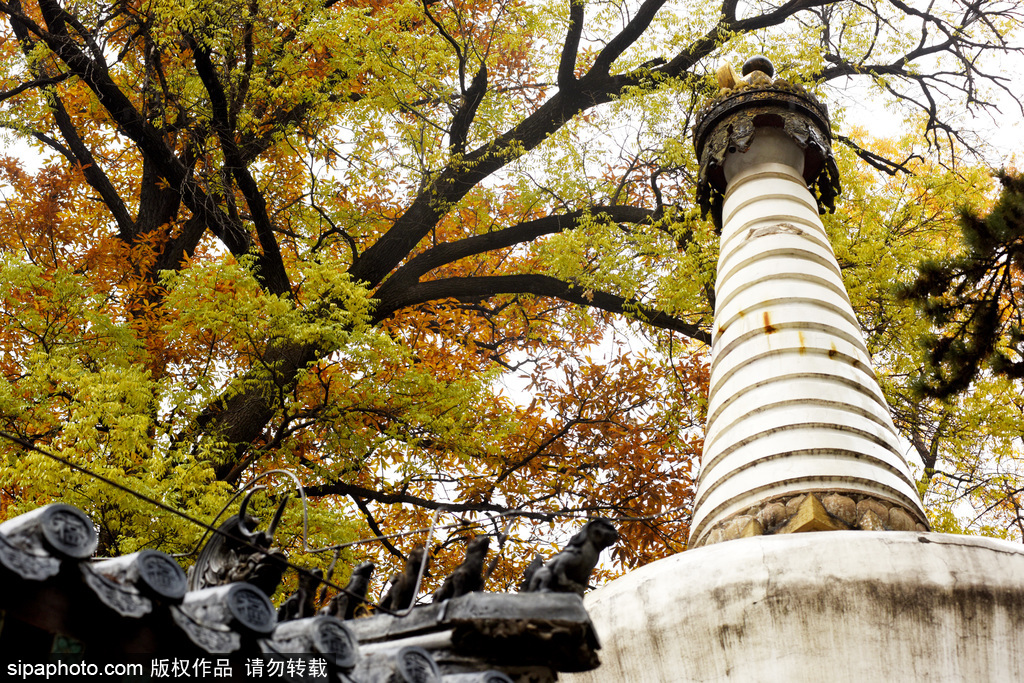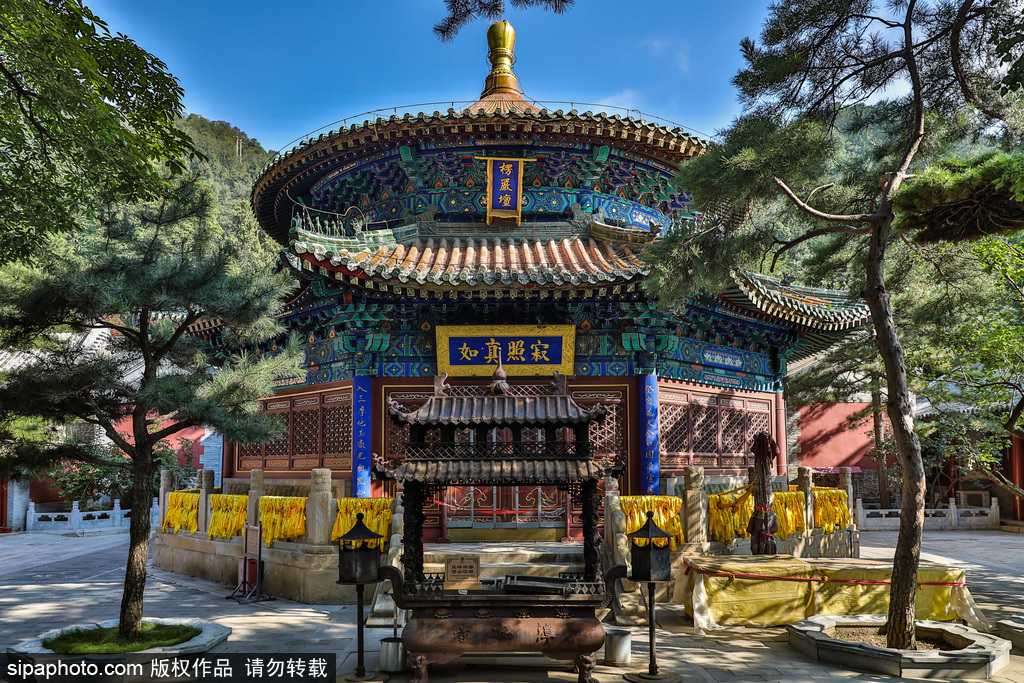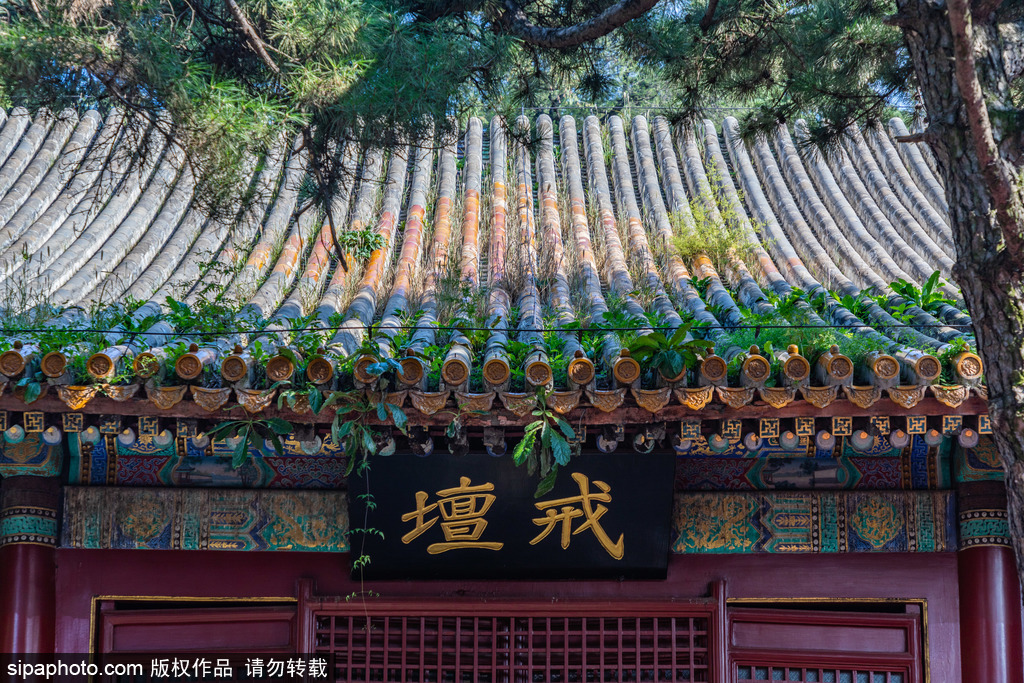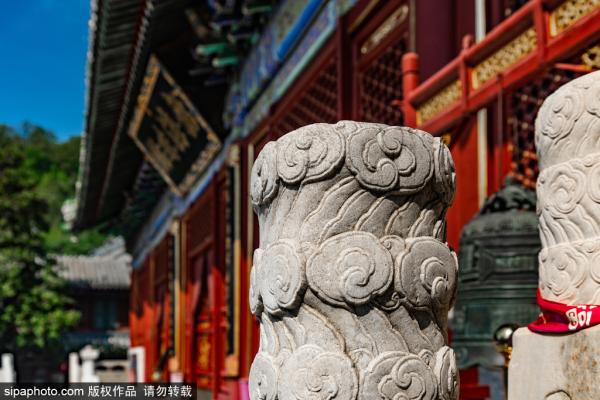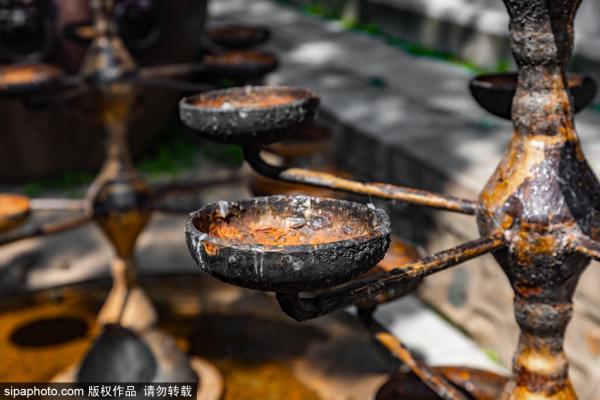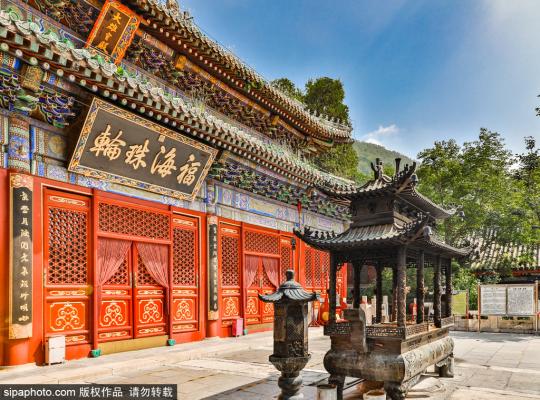Tanzhe Temple (潭柘寺)
With a history of over 1700 years, Tanzhe Temple is the oldest ancient temple in Beijing. There is a folk proverb that " First there is Tanzhe Temple, then there is Beijing City".
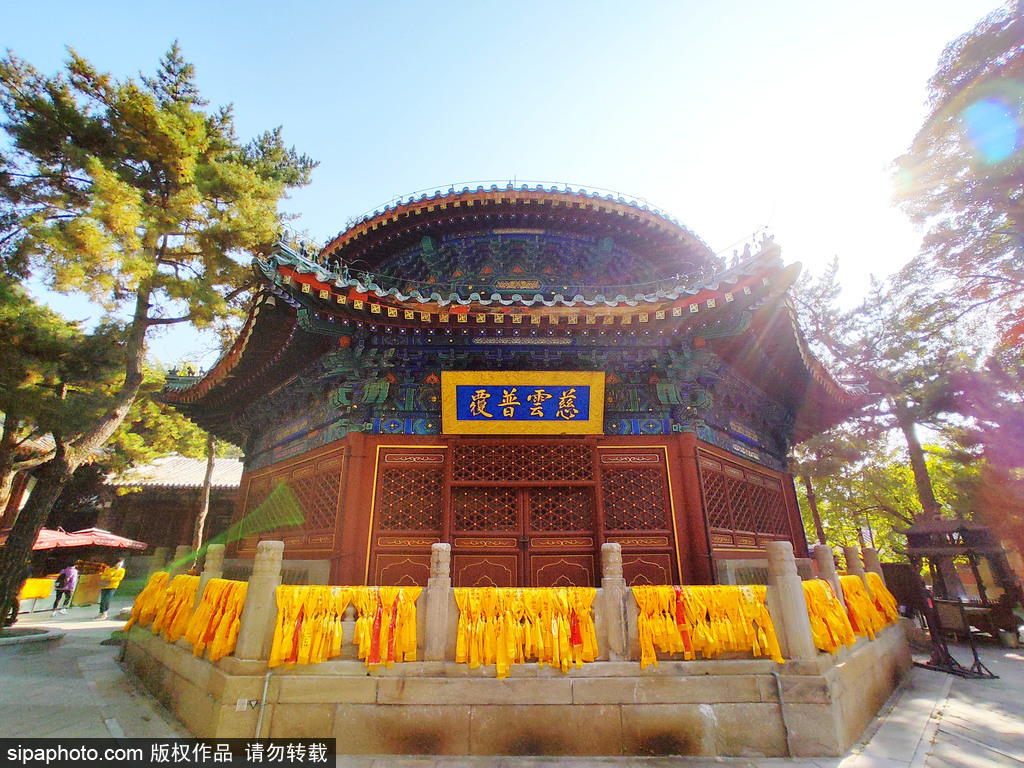
-
Tel:
010-60862505 -
Best Time to Visit:
April-October -
Duration:
3 hours -
Admission:
Adult ticket: 50 RMB/person
Half-price tickets: students, seniors from other provinces
Free admission: Beijing senior citizens, children under 1.2m, disabled persons, firefighting officers, active military personnel Adult ticket: 50 RMB/person
Half-price tickets: students, seniors from other provinces
Free admission: Beijing senior citizens, children under 1.2m, disabled persons, firefighting officers, active military personnel -
Opening Hours:
8:30-16:30
Description
Tanzhe Temple (潭柘寺)
With a history of over 1700 years, Tanzhe Temple is the oldest ancient temple in Beijing. The temple faces north and south, with its back against the Baozhu Peak. It is surrounded by nine peaks in the shape of a horseshoe, as if in the embrace of nine giant dragons. The tall mountains block the cold current coming from the northwest, so the climate here is warm and humid. The temple is surrounded by ancient trees, pagodas, and lofty halls.The whole temple is skillfully laid out according to the...
Read MoreTanzhe Temple (潭柘寺)
With a history of over 1700 years, Tanzhe Temple is the oldest ancient temple in Beijing. The temple faces north and south, with its back against the Baozhu Peak. It is surrounded by nine peaks in the shape of a horseshoe, as if in the embrace of nine giant dragons. The tall mountains block the cold current coming from the northwest, so the climate here is warm and humid. The temple is surrounded by ancient trees, pagodas, and lofty halls.The whole temple is skillfully laid out according to the terrain, with a staggered pattern and a beautiful environment dotted with famous plants.
Tanzhe Temple is large in scale, covering an area of 2.5 hectares inside and 11.2 hectares outside the temple. Together with the surrounding forests and mountain fields governed by Tanzhe Temple, the total area is over 121 hectares. The halls are built according to the mountains, which are laid in a staggered manner. The Forbidden City in Beijing has 9,999 and a half rooms, Tanzhe Temple had 999 and a half rooms in its heyday in the Qing Dynasty, just like a miniature of the Forbidden City. It is said that when the Forbidden City was built in the early Ming Dynasty, it was modeled after the Tanzhe Temple. Now Tanzhe Temple has a total of 943 rooms, including 638 ancient halls. The complex maintains the style of the Ming and Qing dynasties, and is one of the largest ancient temple complexes in the suburbs of Beijing. The whole complex fully embodies the aesthetic principles of Chinese ancient architecture, with a central axis running through the middle and basic symmetry on the left and right sides, making the whole complex look regular, neat, clear and hierarchical. Its architectural forms include halls, pavilions, pavilions, altars, etc., in a variety of forms. Outside the temple there are the upper and lower pagoda courtyard, East and West Guanyin cave, Anle Yanshou Hall, Dragon Pool and many other buildings and attractions. With attractions scattered among it, it is like the stars holding the moon, making up a scenic spot of several miles in circumference, with many attractions, various styles and different interests. Tanzhe Temple is not only rich in humanistic landscape, but also features a beautiful natural landscape. There are beautiful scenery in spring, summer, autumn and winter, and different interests in the morning, noon and night. As early as the Qing Dynasty, the "Tanzhe Ten Views" have been famous in Beijing.
Nowadays, Tanzhe Temple features lofty halls and tranquil courtyards. It has distinctive halls, chambers, altars and pavilions with extraordinary scenery. There are ancient trees, flowers and bamboos all over the temple, as well as rockeries and goblets. The red walls, blue tiles and the flying eaves of the building are reflected in the green pines and cypresses. The late Mr. Zhao Puchu, the president of the Chinese Buddhist Association, wrote a couplet which exclaimed it, "The spirit absorbs half of the Taihang Mountains, and the land opens up to Beijing region."
Tanzhe Temple not only attracts visitors from all over the world with its many monuments and beautiful scenery, but also has built modern tourist service facilities in recent years, implementing one-stop services for transportation, accommodation, catering, sightseeing, entertainment and shopping, making it a famous tourist destination in China and abroad. In 1997, approved by the Beijing Municipal Government, the monastic community moved in and Tanzhe Temple resumed its religious activities.
Gallery
Latest News
Explore
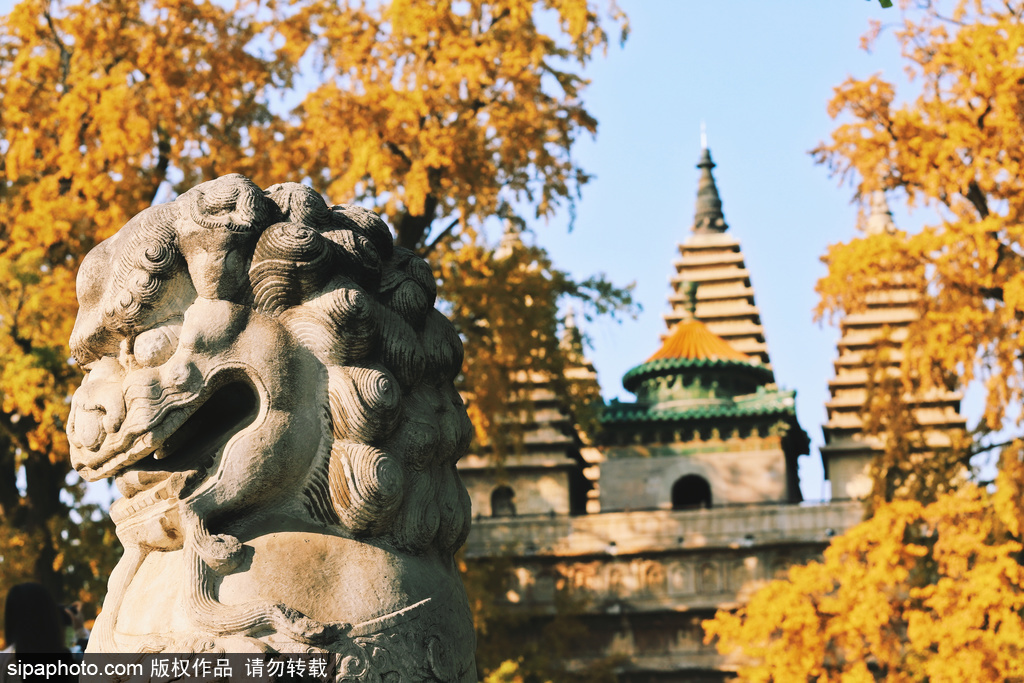
Wuta Temple
Wuta Temple was formerly known as "Zhenjue Temple" and was named "Wuta (Five Pagodas)" because of its five existing vajra pagodas.
Jietai Temple
Originally named Huiju Temple, the temple was given the name Wanshou Zen Temple by Emperor Yingzong of the Ming Dynasty. Because the largest Buddhist preceptor in the country was built inside the temple, it is commonly known as Jietan Temple and also called Jietai Temple.
Hongluo Temple
Hongluo Temple was built in the fourth year of Xiankang period of the Eastern Jin Dynasty (338 AD), originally named "Daming Temple", and changed its name to "Huguo Zifu Zen Temple" during the Ming Dynasty. It is commonly called " Hongluo Temple" because of the wonderful legend of the Hongluo Fairy.
Do You Know
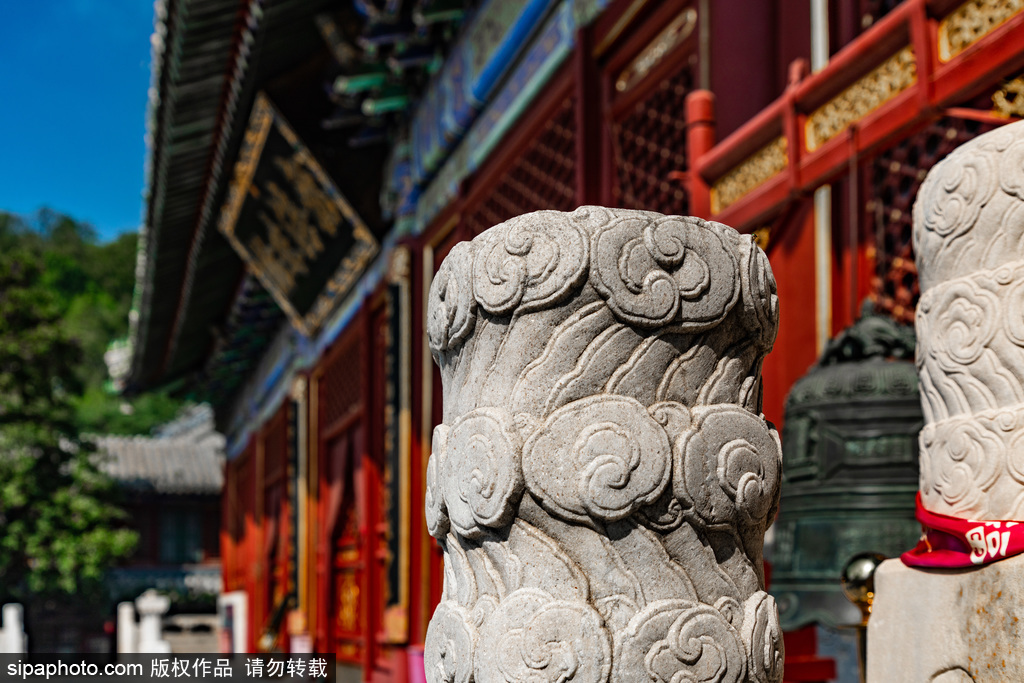
Name change of Tanzhe Temple
Tanzhe Temple was built in the first year of Yongjia period of the Western Jin Dynasty (307 AD), and the temple was originally named "Jiafu Temple" and was given the name "Xiuyun Temple" by Emperor Kangxi in the Qing Dynasty. However, because there is a dragon pond(Tan) behind the temple and a cudgel(Zhe) tree on the hill, it has been called "Tanzhe Temple" by the people.
